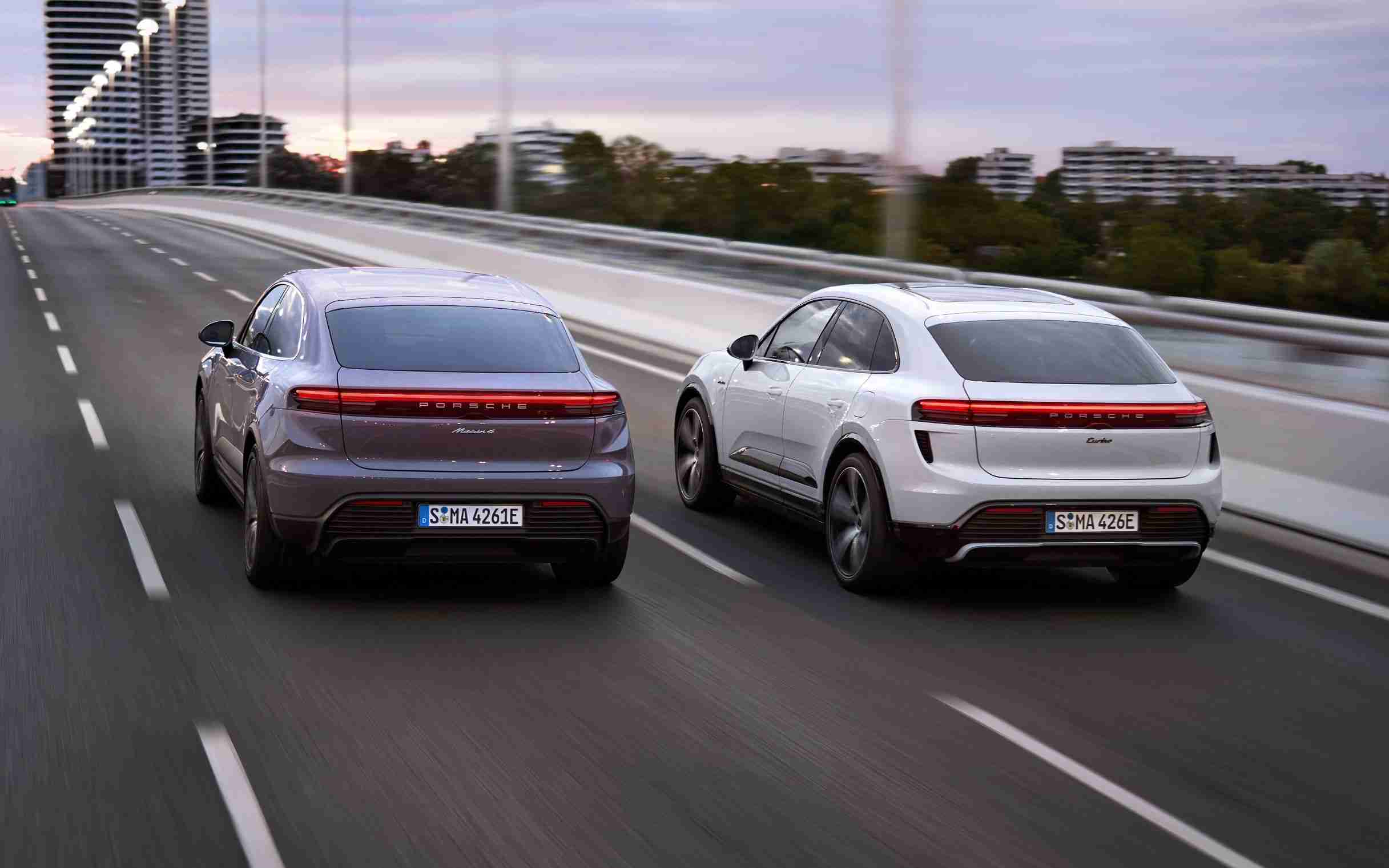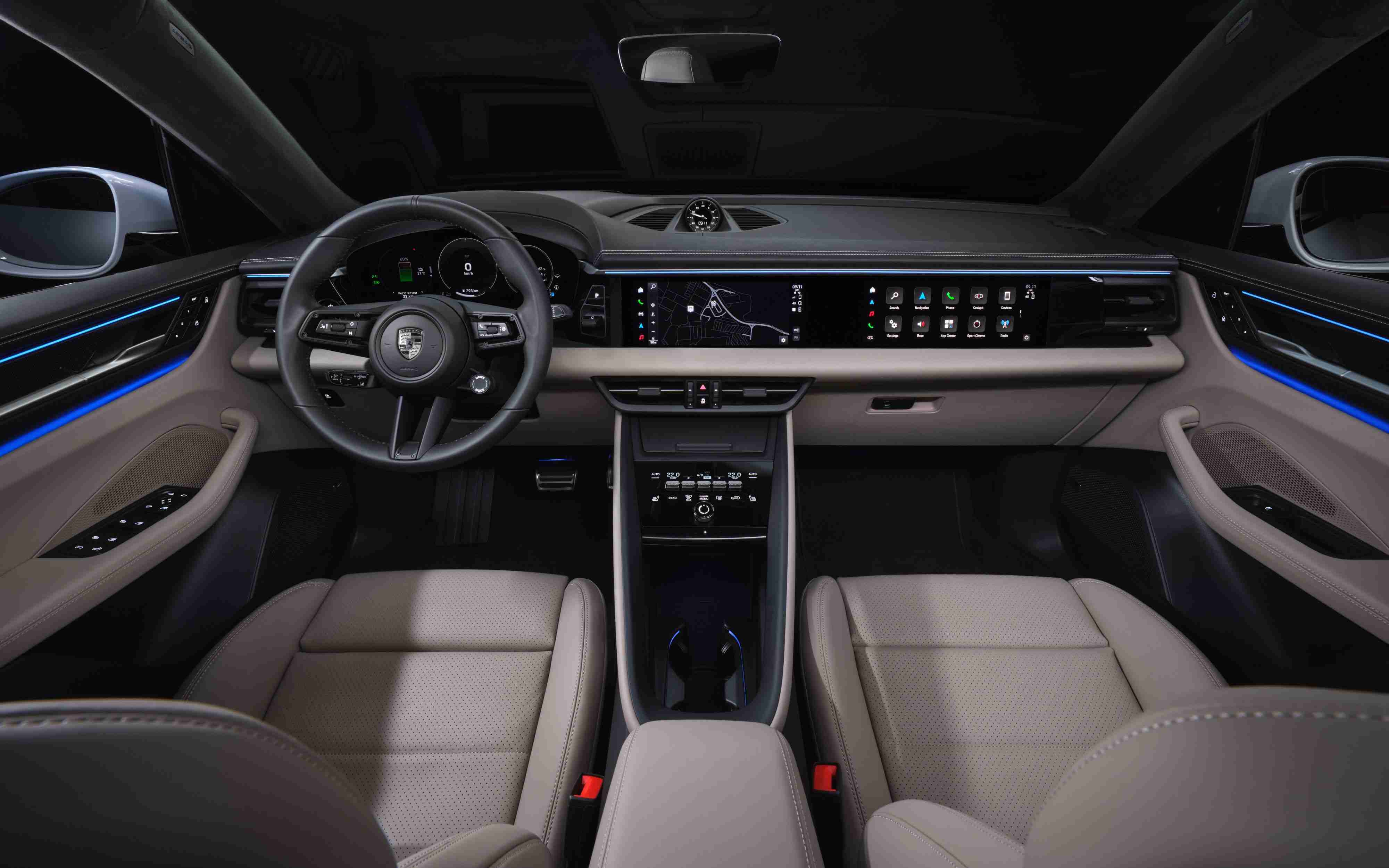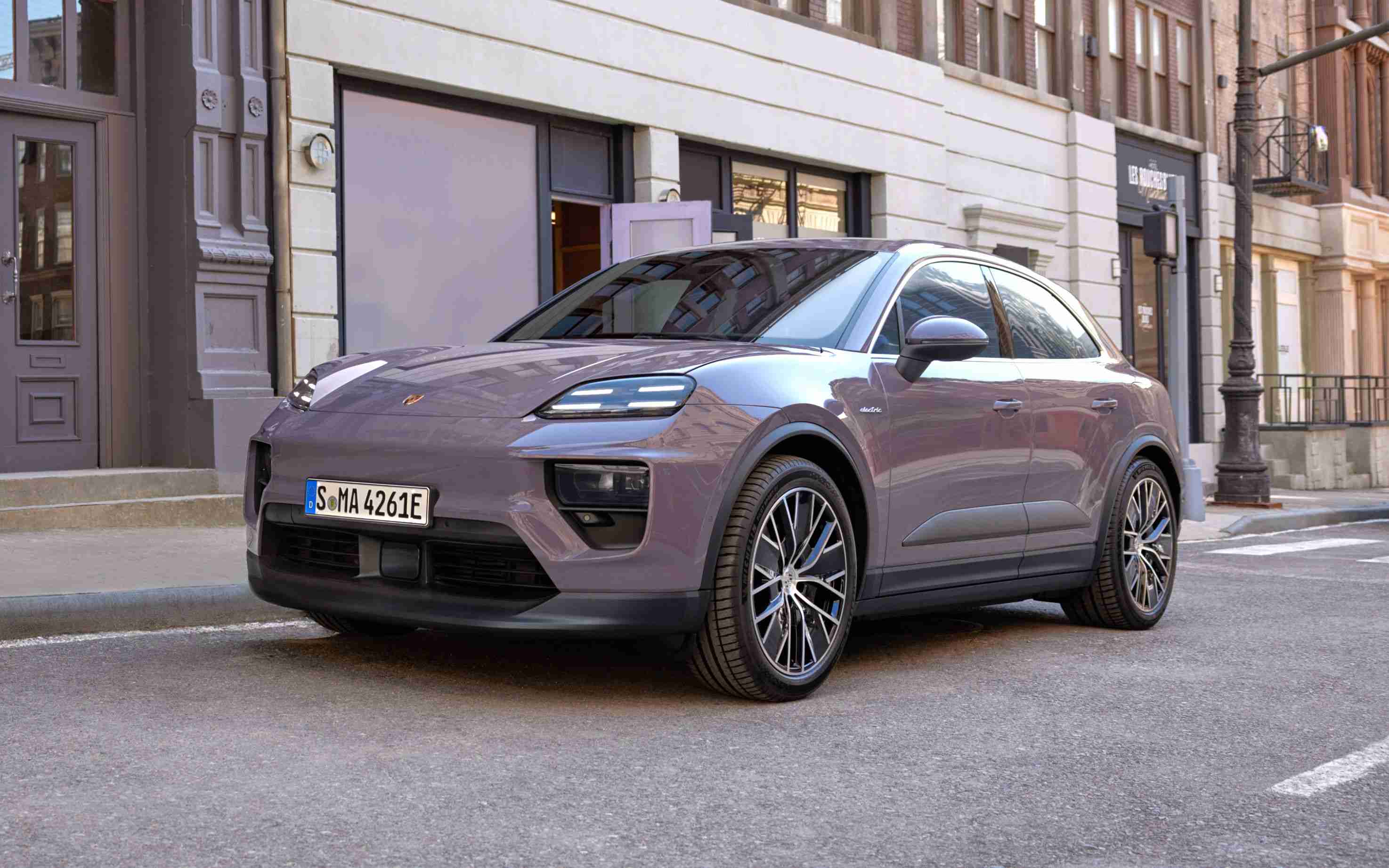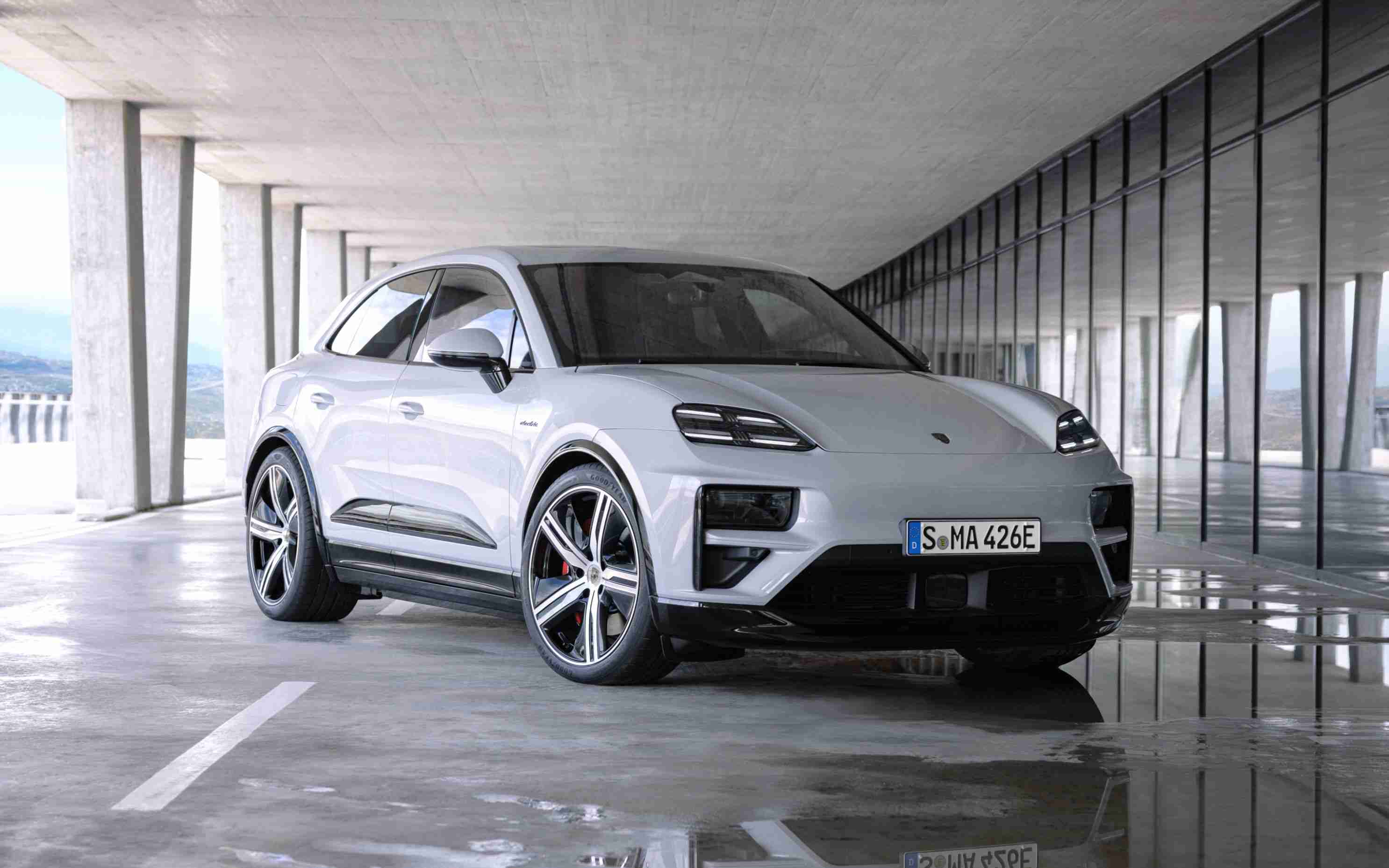All-new, all-electric Porsche Macan makes its world premiere in Singapore
The second-generation Macan is a battery-electric Porsche SUV with dual-motor power of either 300kW (Macan 4) or 470kW (Macan Turbo), a radical yet recognisable exterior, a practical yet sporty interior, and a state-of-the-art dashboard.
The world premiere of the all-new Porsche Macan is significant in another way. It is the first international production model to make its global debut in Singapore, at Gardens by the Bay, livestreamed to the rest of the connected world and plugged into the digital life from the get-go.
This is obviously a crucial car for Porsche. In the past 10 years (2014-2023), the Macan has been a best-seller alongside the equally popular Cayenne, the automaker’s other sporty-utility vehicle, thus contributing strongly to the bottom line which keeps the 911s and 718s going/racing.
More than 800,000 Macans have been delivered to date, and sales of the previous model won’t stop just yet, depending on individual markets, relevant regulations and customer demand. Therefore, some petrolheads still have a time-limited choice between a newish, traditionally turbocharged Macan powered by petrol and a new-age Macan Turbo powered by electrons.
In any case, the electrical Macan is inevitable. With automotive electrification continuing apace to ostensibly save the planet, Porsche wisely decided to make the Macan fully electric from start to finish, instead of partially electric like the latest Cayenne E-Hybrid.
 Macan 4 in Provence colour (left) and Macan Turbo in Ice Grey colour.
Macan 4 in Provence colour (left) and Macan Turbo in Ice Grey colour.
Naturally, the 2024 Macan product information focuses on the electric powertrain, which is at the heart of the electrifying performance.
The two variants at launch are the 300kW / 650Nm Macan 4 and 470kW / 1,130Nm Macan Turbo. Both have a dual-motor setup with all-wheel drive, a single-speed gearbox on the rear axle and a 100 kWh high-voltage battery, of which 95 kWh is the nett useable energy.
The two Macans are built on an 800-volt architecture supporting ultra-rapid charging at up to 270 kW by compatible DC chargers, which can juice up the big battery’s state of charge from 10% to 80% in about 21 minutes.
Currently, Singapore’s most powerful public DC chargers are rated at 180 kW (Shell) or 150 kW (SPC), so the Macan’s fast-charging capability would be less fast in the local context. As for AC “slow” charging, via a household wall box or a public kiosk, the Macan uses an 11 kW system, with an 22 kW option in the works.
In terms of driving range (on WLTP combined cycle), it’s up to 613 kilometres for the Macan 4 and up to 591 kilometres for the Macan Turbo. Porsche claims that the car’s energy recuperation (mainly from coasting and braking) could stretch the real-world range by up to 30 percent in optimum conditions.
The Macan’s streamlined body with a low drag coefficient of 0.25 also helps the mileage. The measures that assist the car to cut through the air efficiently include active cooling flaps on the front air intakes, air curtains below the headlight modules, a fully-closed underbody with flexible covers, aerodynamic wheel designs, a louvred rear diffuser, and an adaptive rear spoiler.
The aerodynamics is good, while the aesthetics is great. The Macan is one handsome machine. Porsche’s chief designer Michael Mauer says that the newcomer has an even sportier and more dynamic vibe.
Indeed, sportiness is still the name of the Macan design game in the sport-utility segment, but electrified now.
The basic proportions are even more purposeful than the predecessor’s, thanks to adjustments in the dimensions (88 mm more in length, 16 mm more in width and 7 mm lower in height, with a 2,893 mm wheelbase which is 86 mm longer than before).
Delightful exterior details include the “split” front lights (four-point daytime running lights above and matrix LED headlights below), the low-slung bonnet flanked by pronounced wings, the sleek sideblades on the frameless doors, the sloping roofline aka Porsche-flyline, and the sculptural 3D tail-light strip. The wheelset choices go up to 22-inch.
 Macan Turbo cockpit with the bells and digital whistles.
Macan Turbo cockpit with the bells and digital whistles.
The new Macan cockpit also went through a design revolution. The free-standing 12.6-inch curved instrument cluster and integrated 10.9-inch central display dominate the dashboard, along with an optional 10.9-inch display for the front passenger’s infotainment and an optional head-up display with augmented-reality features.
This is a contemporary electricar for today’s digital era, so it plugs-and-plays out of the box with Apple CarPlay, Android Auto, applicable apps (both third-party and Porsche’s own), and the internet of interesting things.
Thankfully, not everything is smartphone-style behind the wheel, with just enough physical switches to not alienate “analog” motorists, including for the climate control, wipers/indicators, windows, and cruise controller.
The drive selector between the two primary displays looks a little gadgety (like a variation of the Taycan’s), but at least it’s an actual lever instead of a virtual button.
For drivers who care a lot more about speed time than screen time, the Macan cockpit provides excellent forward visibility, supportive front seats and a sporty driving position (28 mm lower than in the old Macan for certain configurations). Porsche’s Sport Chrono package, suitably electrified in this case, is available to make the driver even happier.

An array of Porsche technologies/acronyms enables the new Macan to prioritise the sport side of its sport-utility equation. It can even head off the beaten track (or random racetrack), with an off-road mode that gives a raised ground clearance of 220 mm to clear obstacles.
The Macan’s technologies include ePTM (electric Porsche Traction Management) with fully-variable power distribution, PASM (Porsche Active Suspension Management), adaptive air suspension (standard for the Macan Turbo), rear-axle steering, and PTV Plus (electronically-controlled rear differential lock).
These cars are fast, despite their weight (2.3 tonnes for the Macan 4 and about 100 kg heavier for the Macan Turbo). The 300 kW Macan 4 goes from a standstill to 100 km/h in 5.2 seconds, while the go-faster 470 kW Macan Turbo does 0-100 km/h in 3.3 seconds and 0-200 km/h in 11.7 seconds.
The high levels of performance qualify the Macan as a sport-utility vehicle which is sportier than usual, but it is still a practical car with a high level of everyday utility. There is 540 litres of boot space in the Macan 4, expandable to 1,348 litres by folding the backseat, with the Macan Turbo having a little less room for cargo due to its standard subwoofer/amplifier under the boot floor.
Indicative prices (at press time) of the all-new, all-electric Porsche Macan in Singapore start from $254,888 for the Macan 4 and $388,088 for the Macan Turbo - without COE, but including applicable EV tax rebates. Deliveries in Singapore are expected to commence by the end of December 2024.

Super App for
Vehicle Owners
Download the Motorist App now. Designed by drivers for drivers, this all-in-one app lets you receive the latest traffic updates, gives you access to live traffic cameras, and helps you manage LTA and vehicle matters.
Did you know we have a Motorist Telegram Channel? Created exclusively for drivers and car owners in Singapore, you can get instant info about our latest promotions, articles, tips & hacks, or simply chat with the Motorist Team and fellow drivers.

